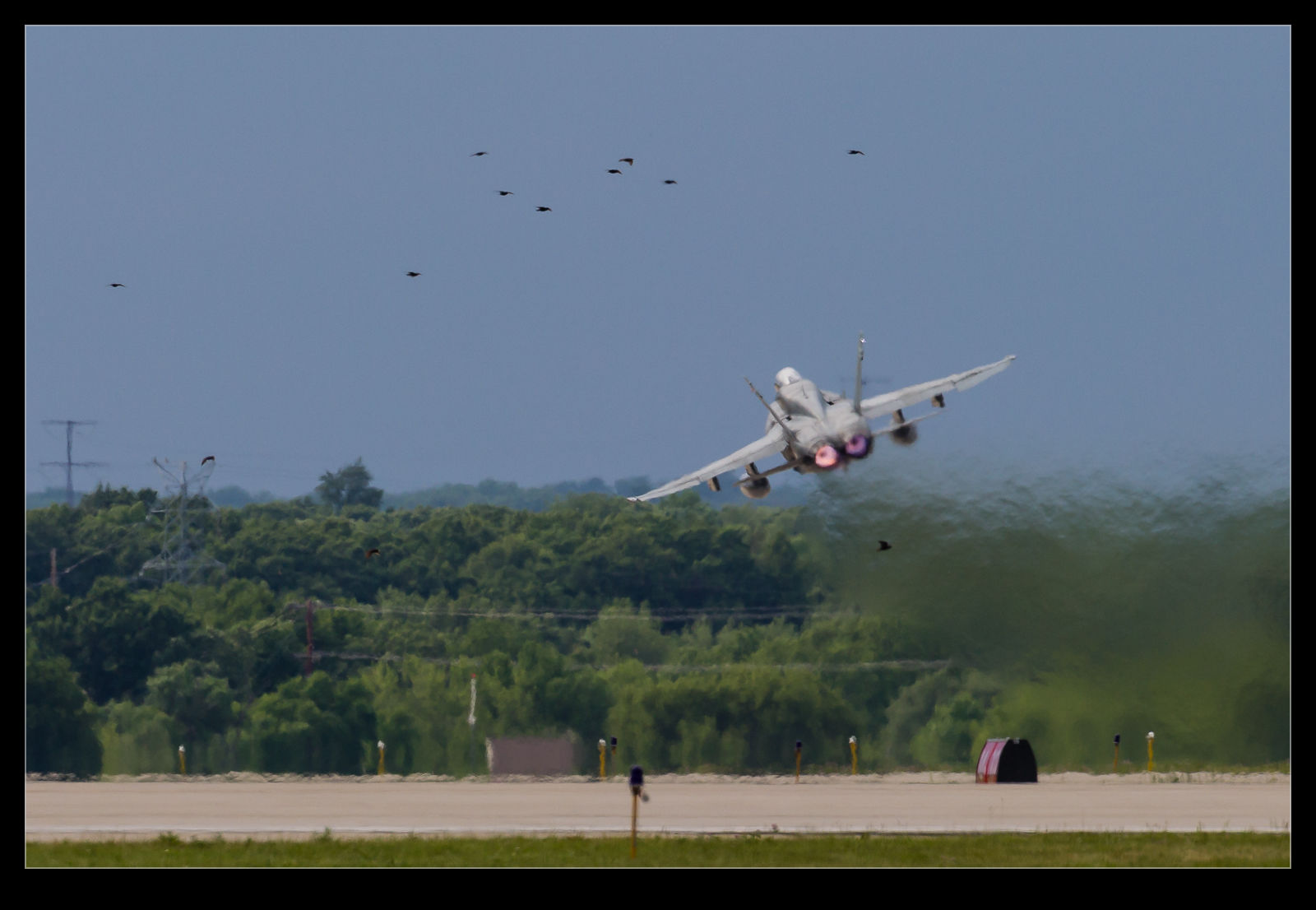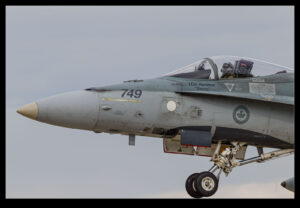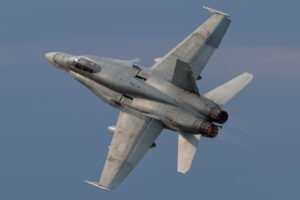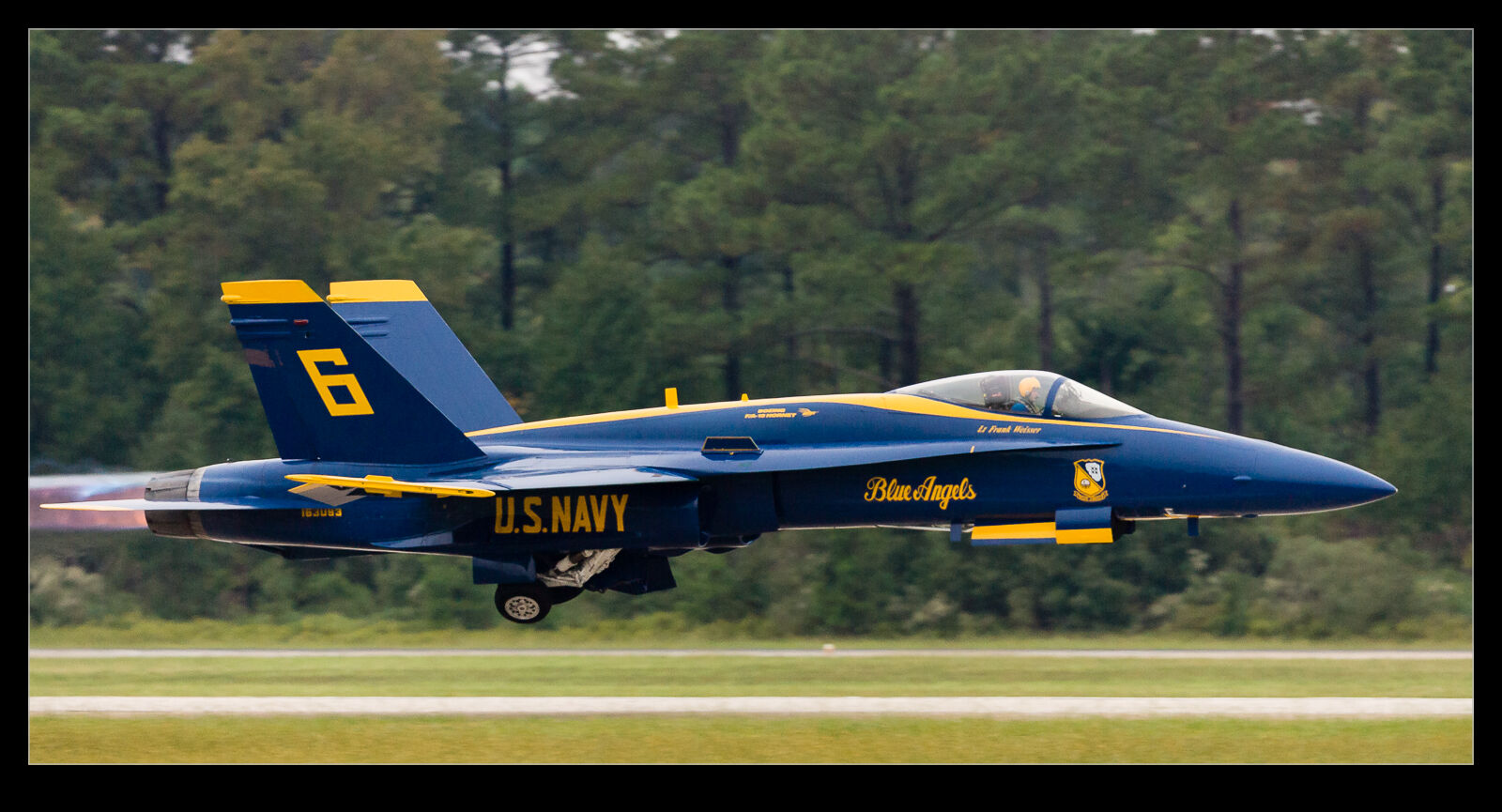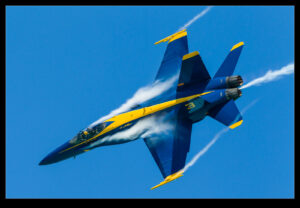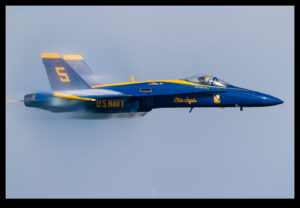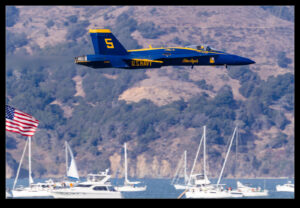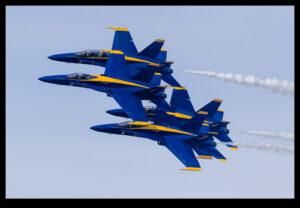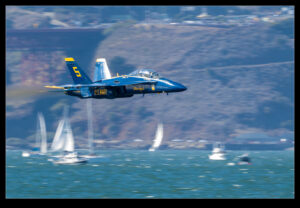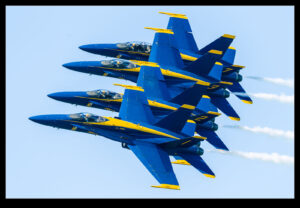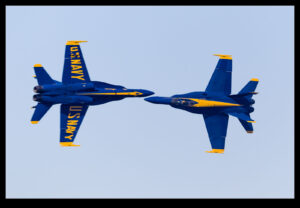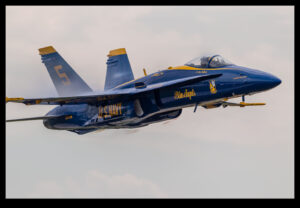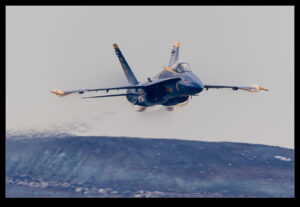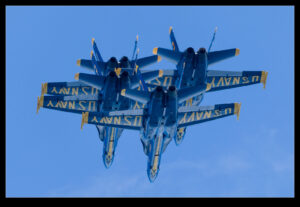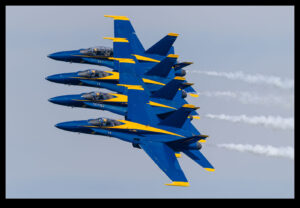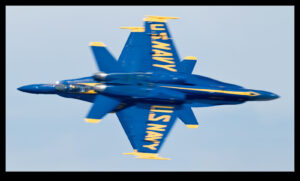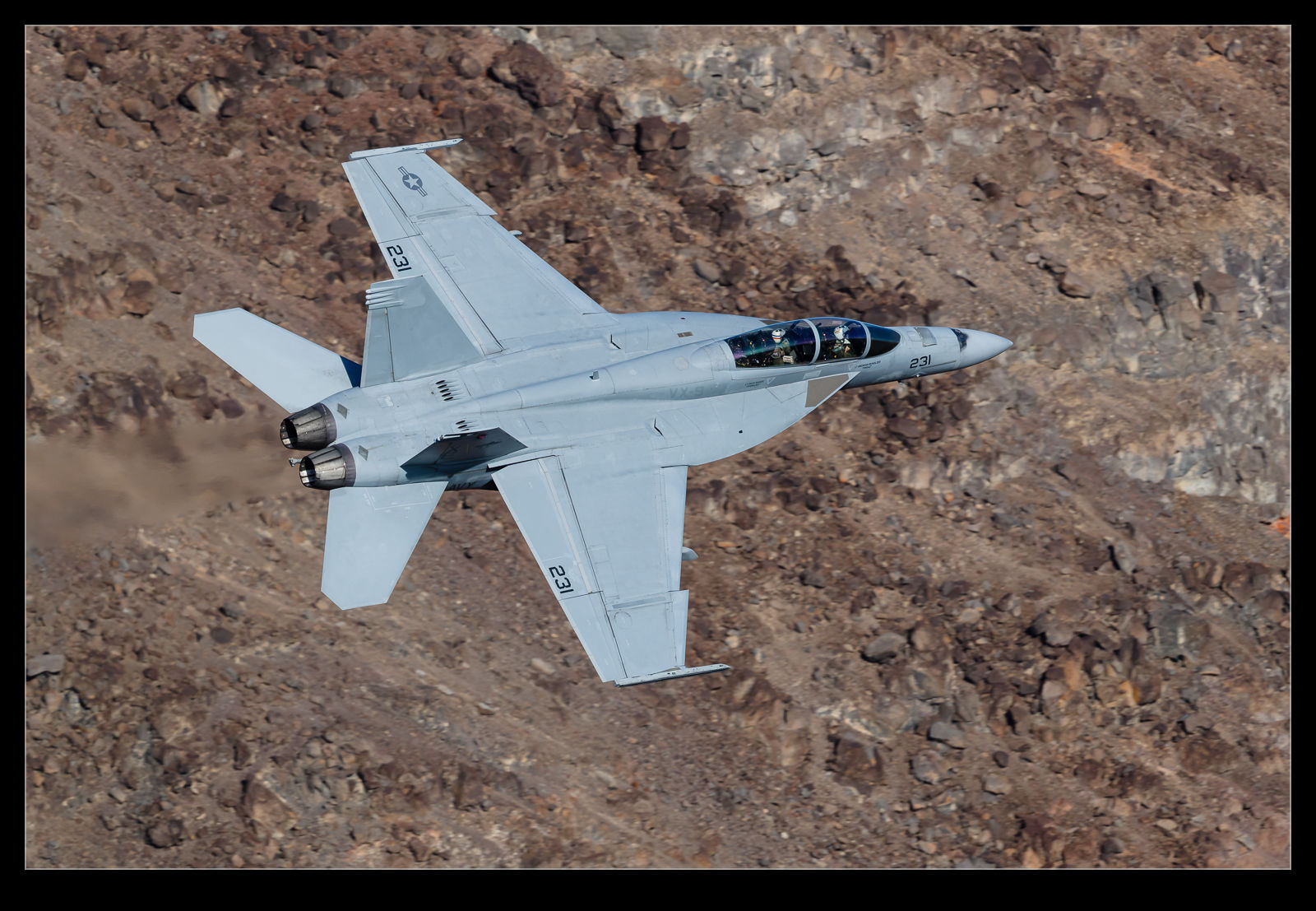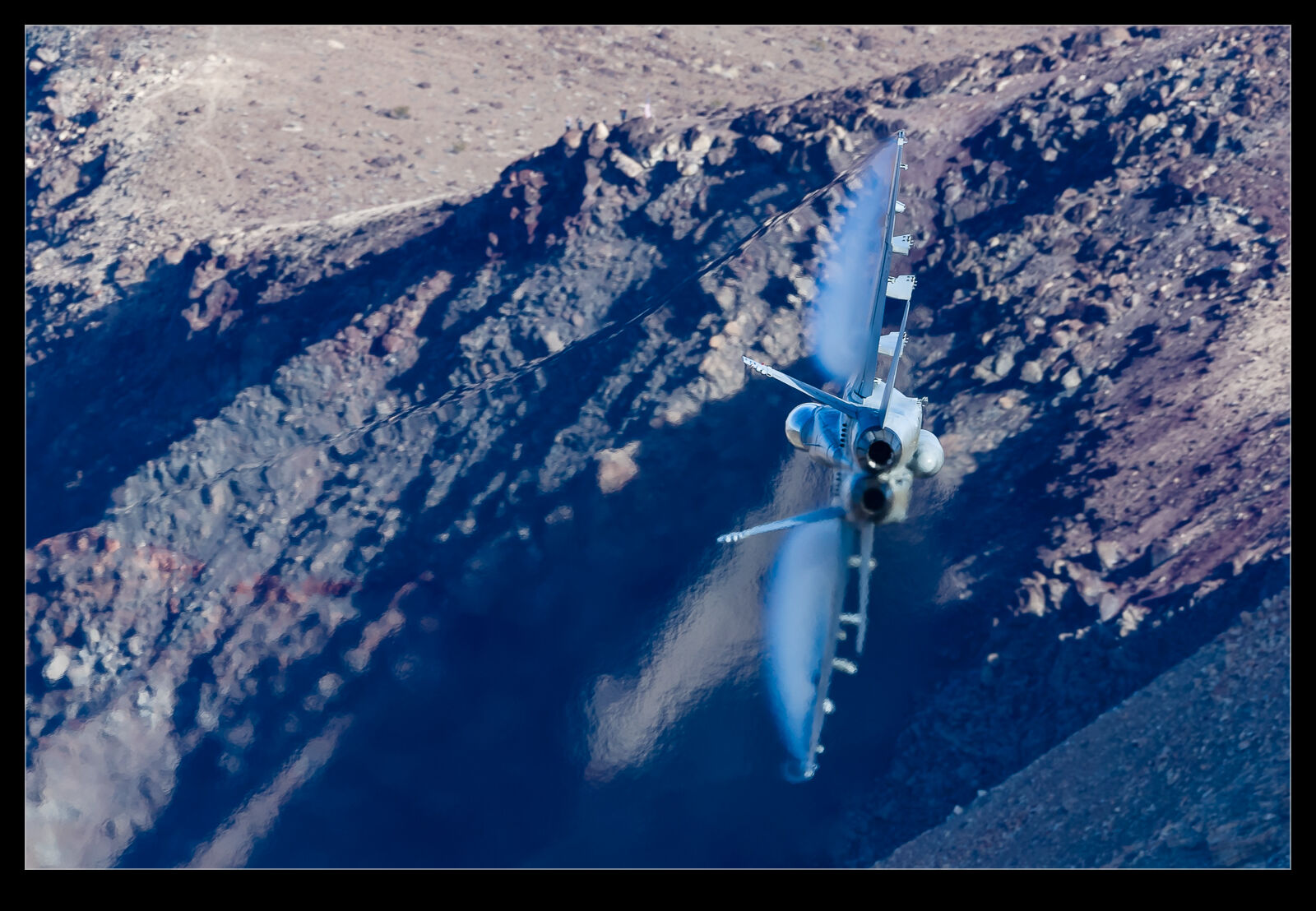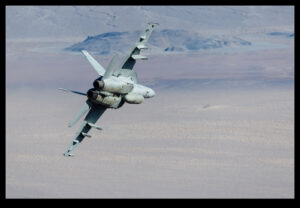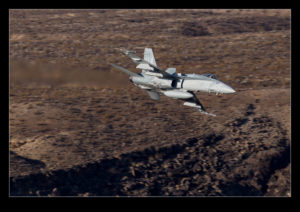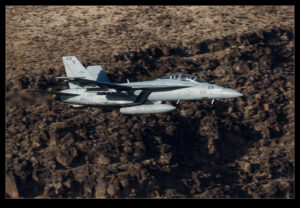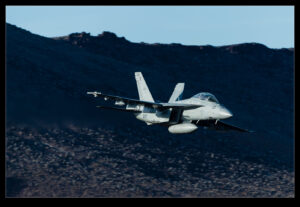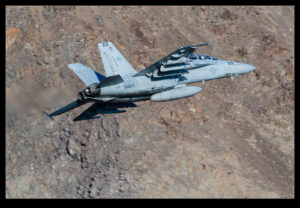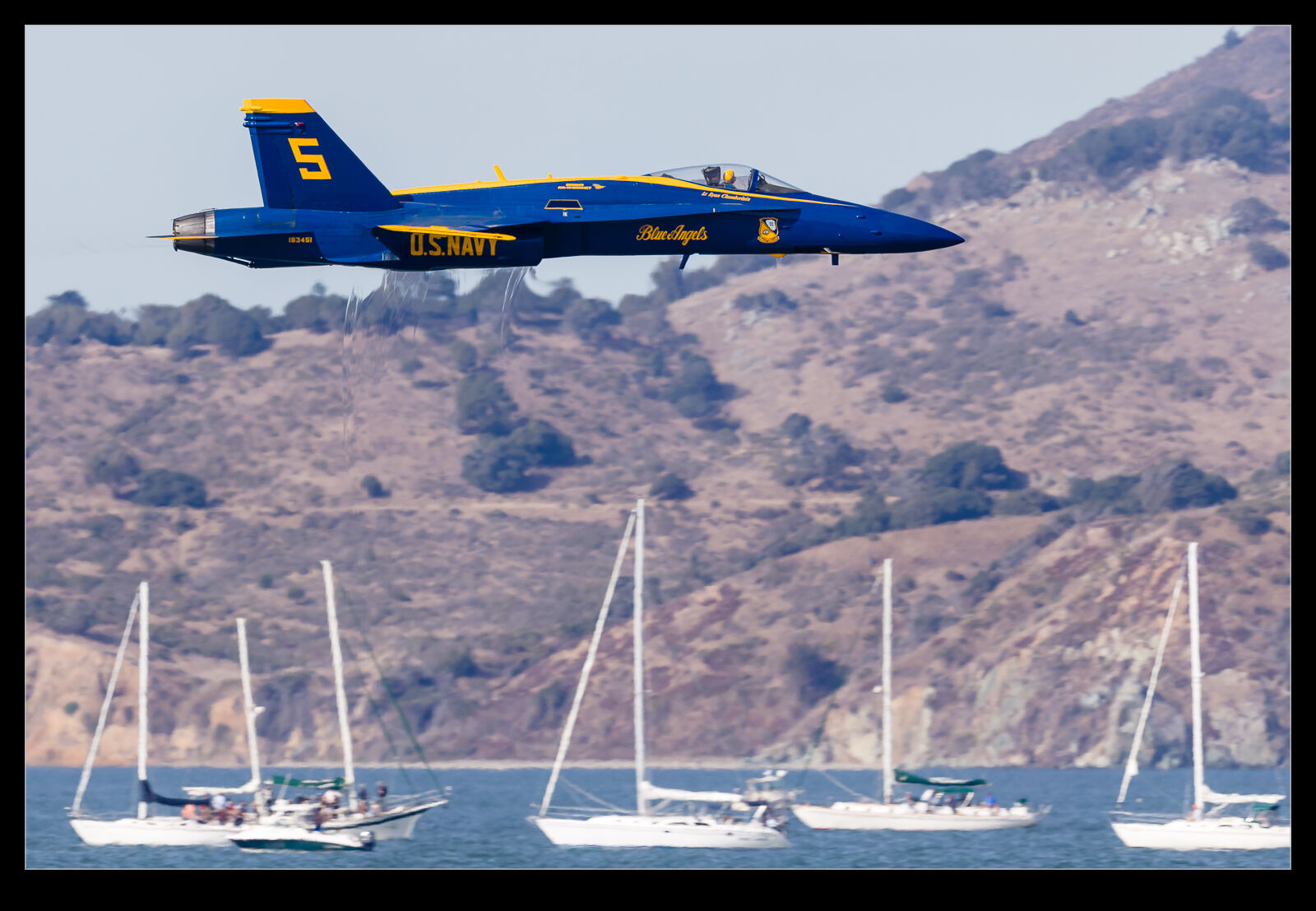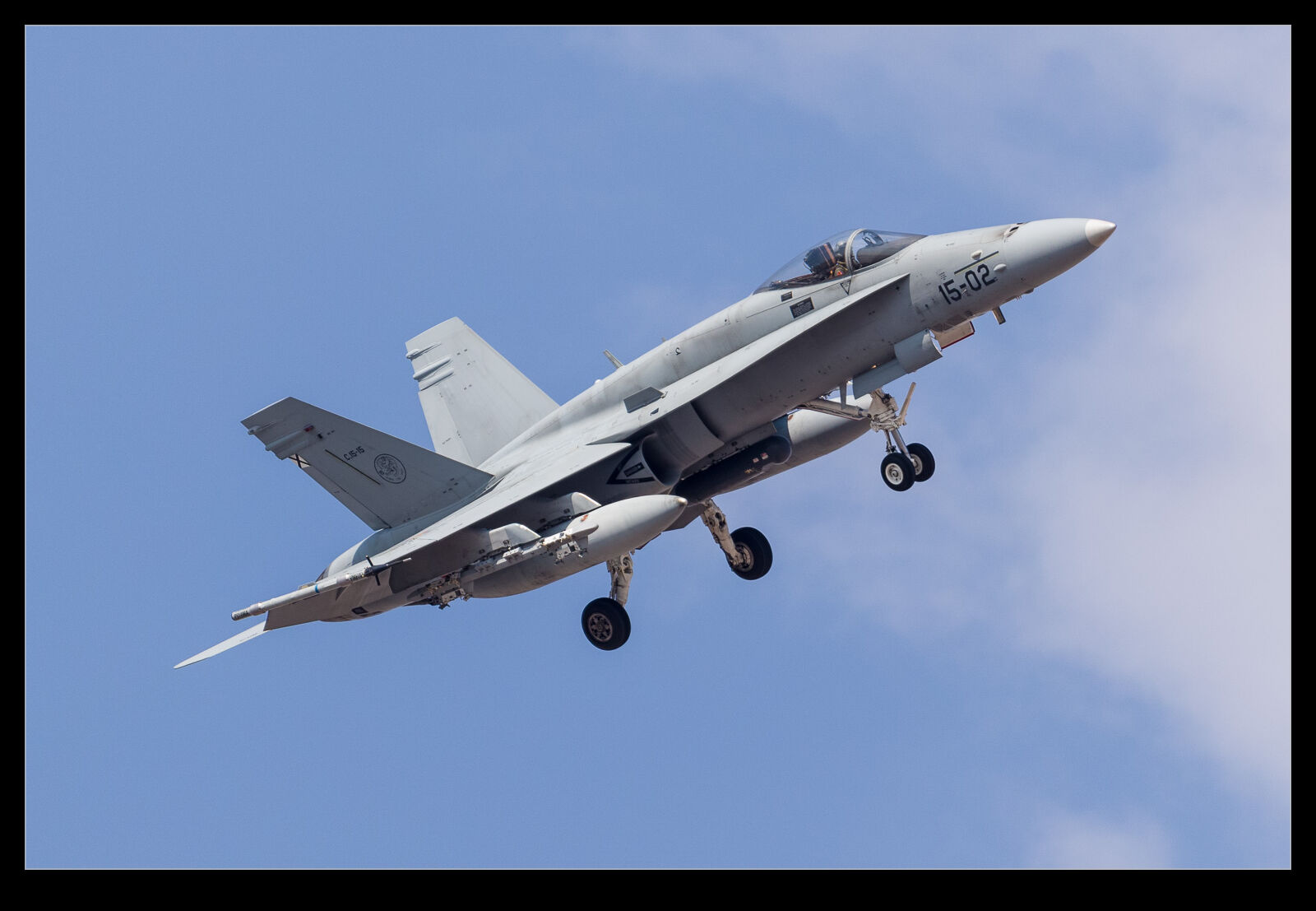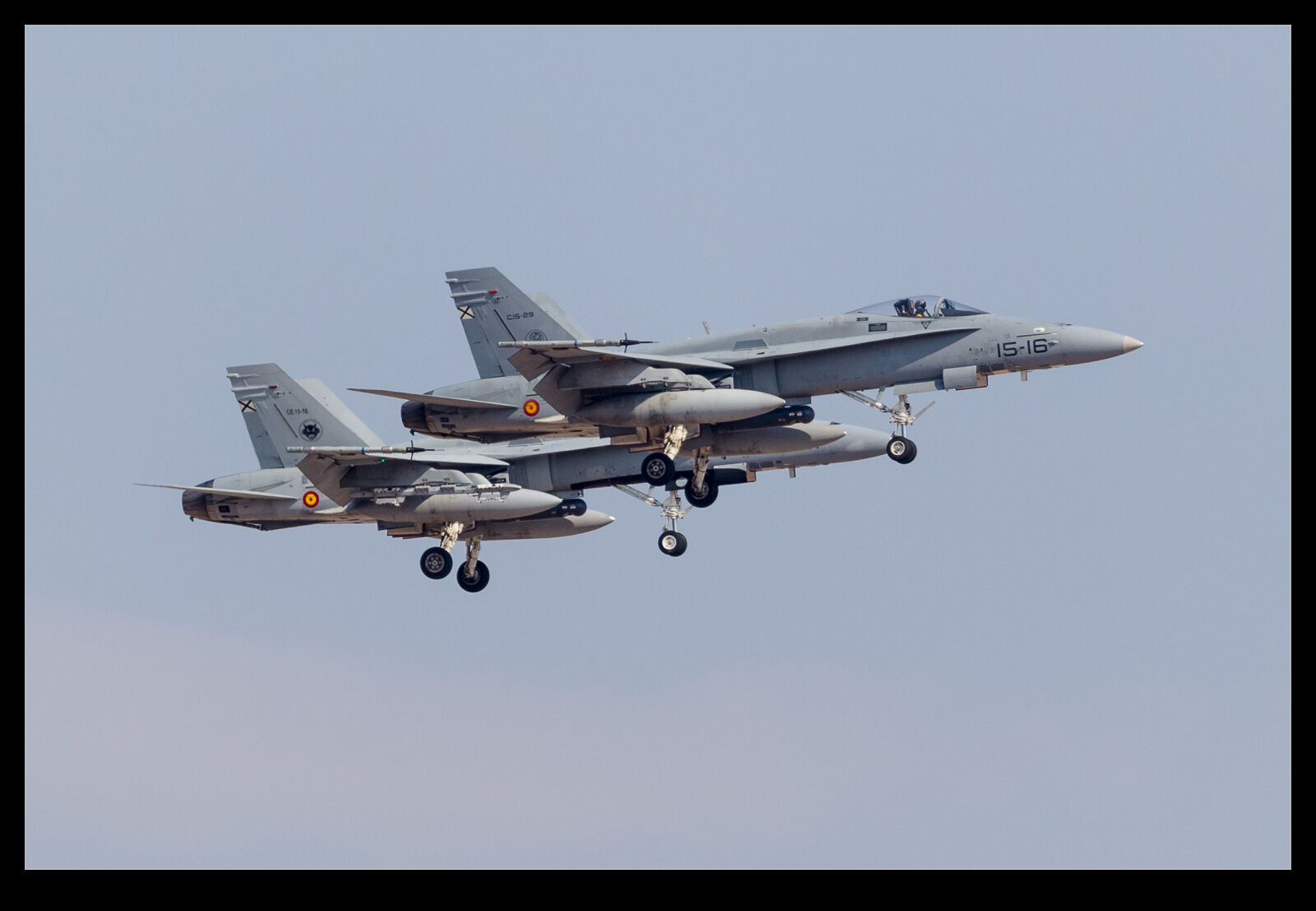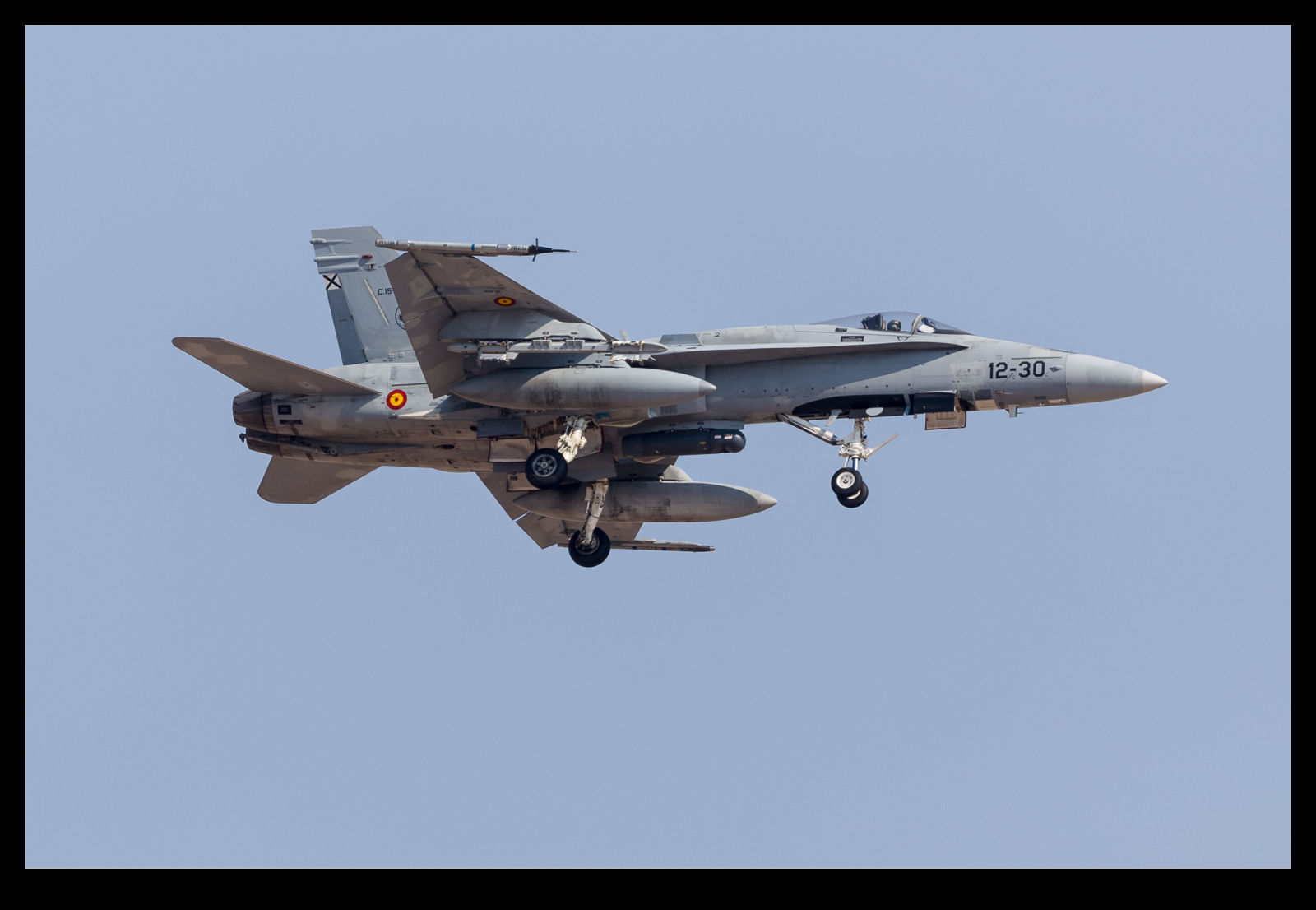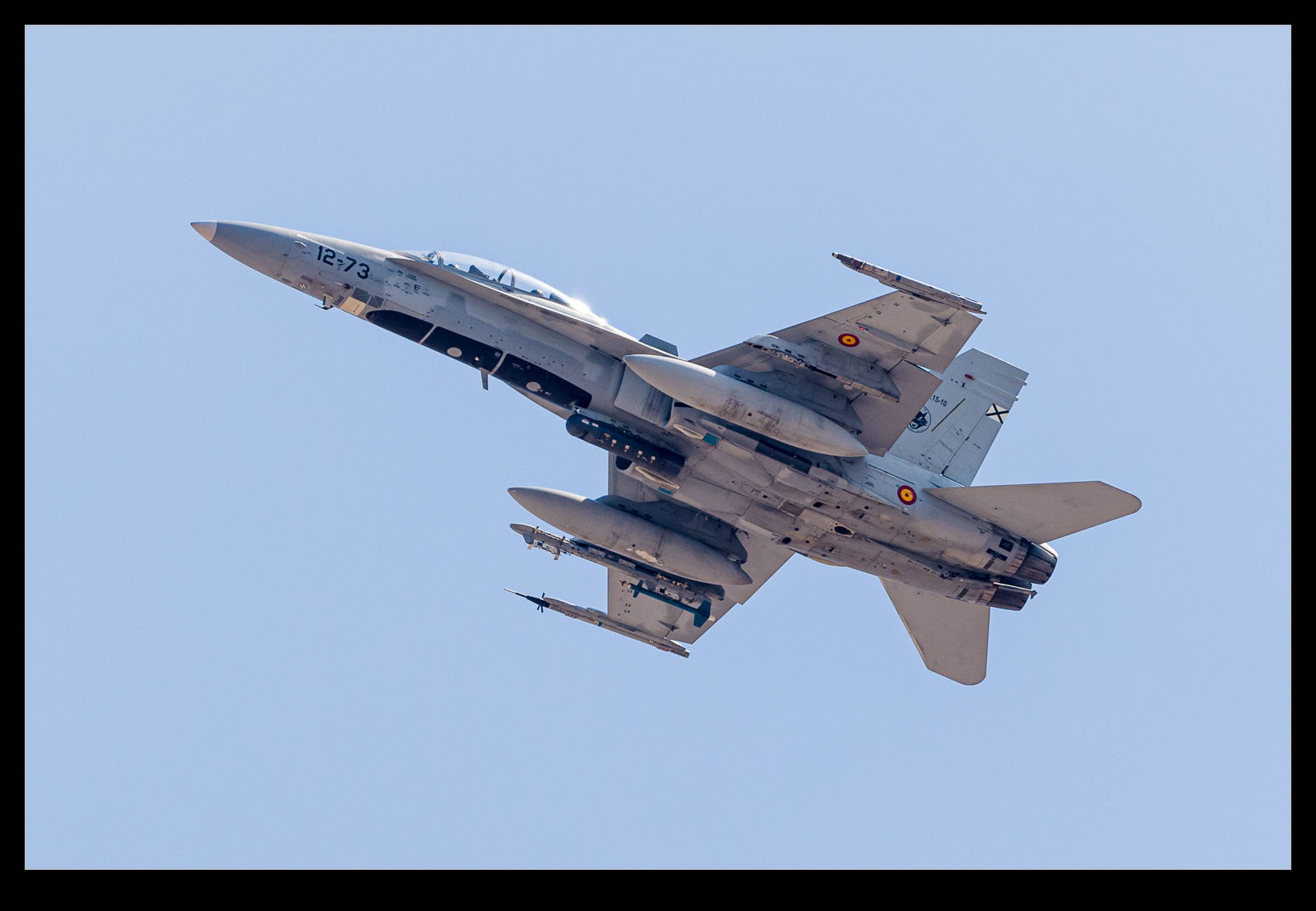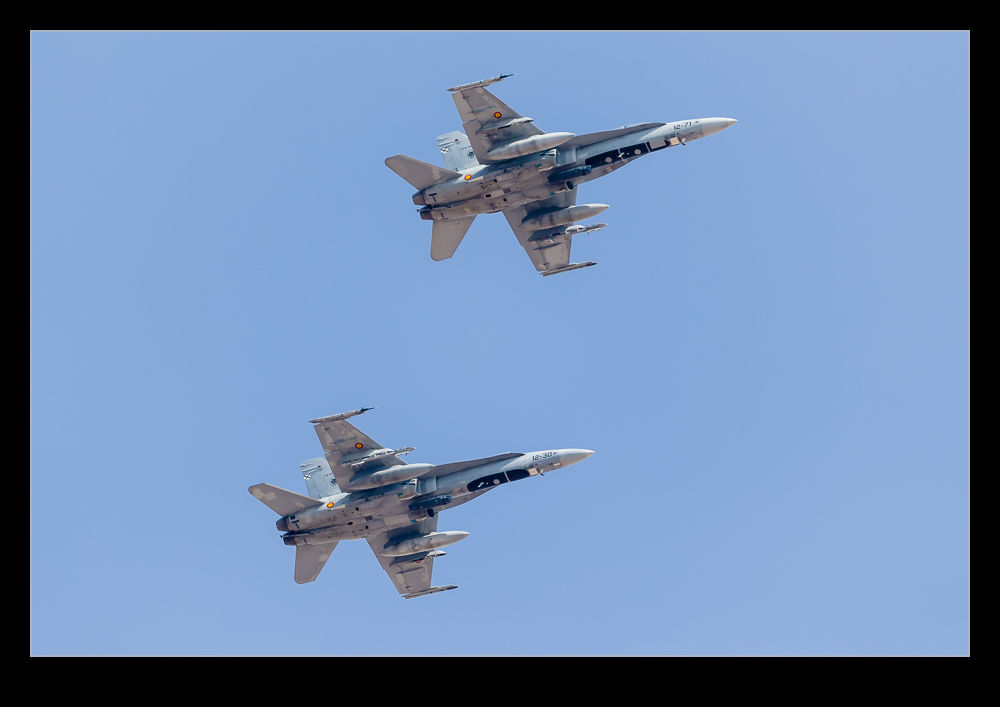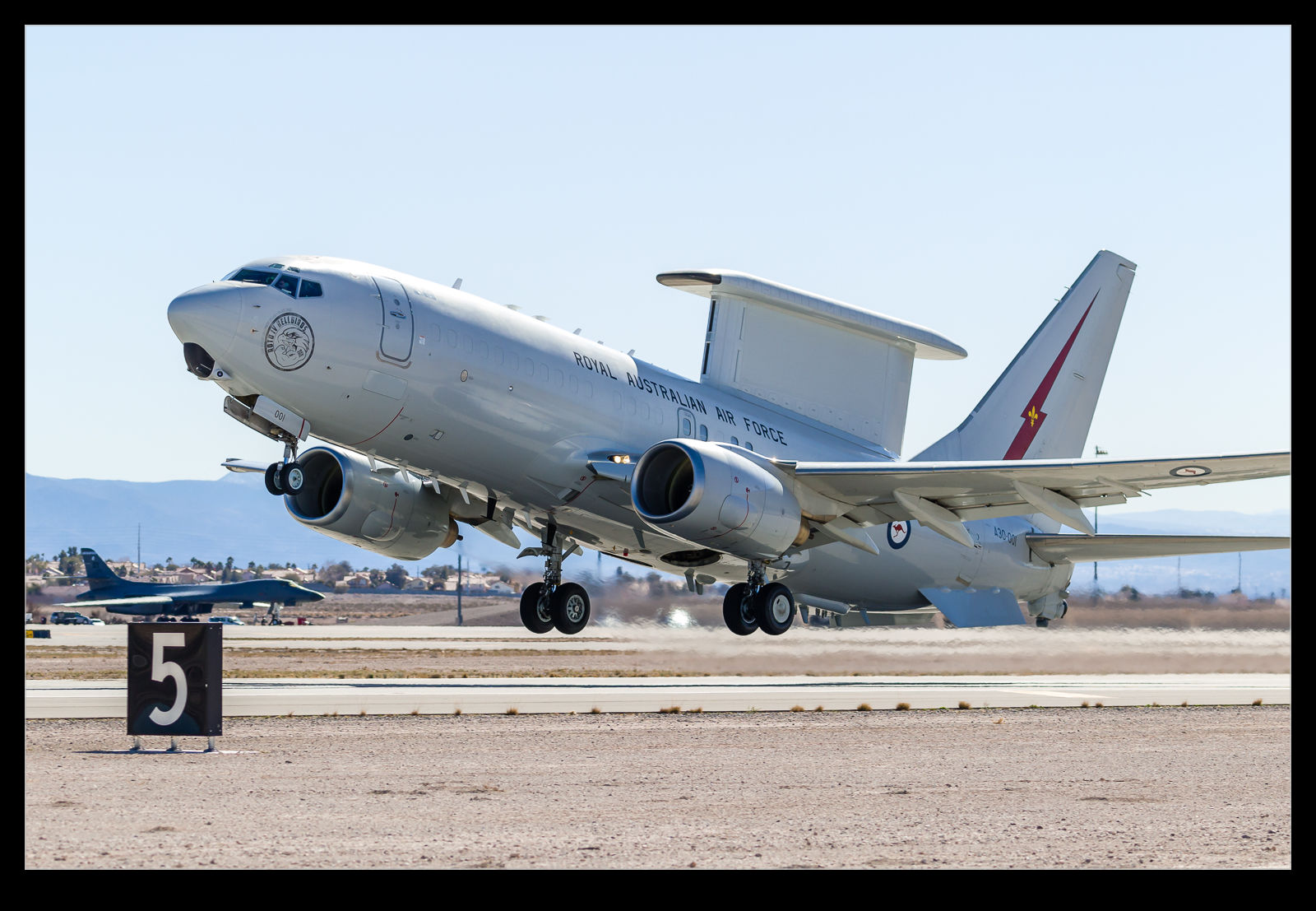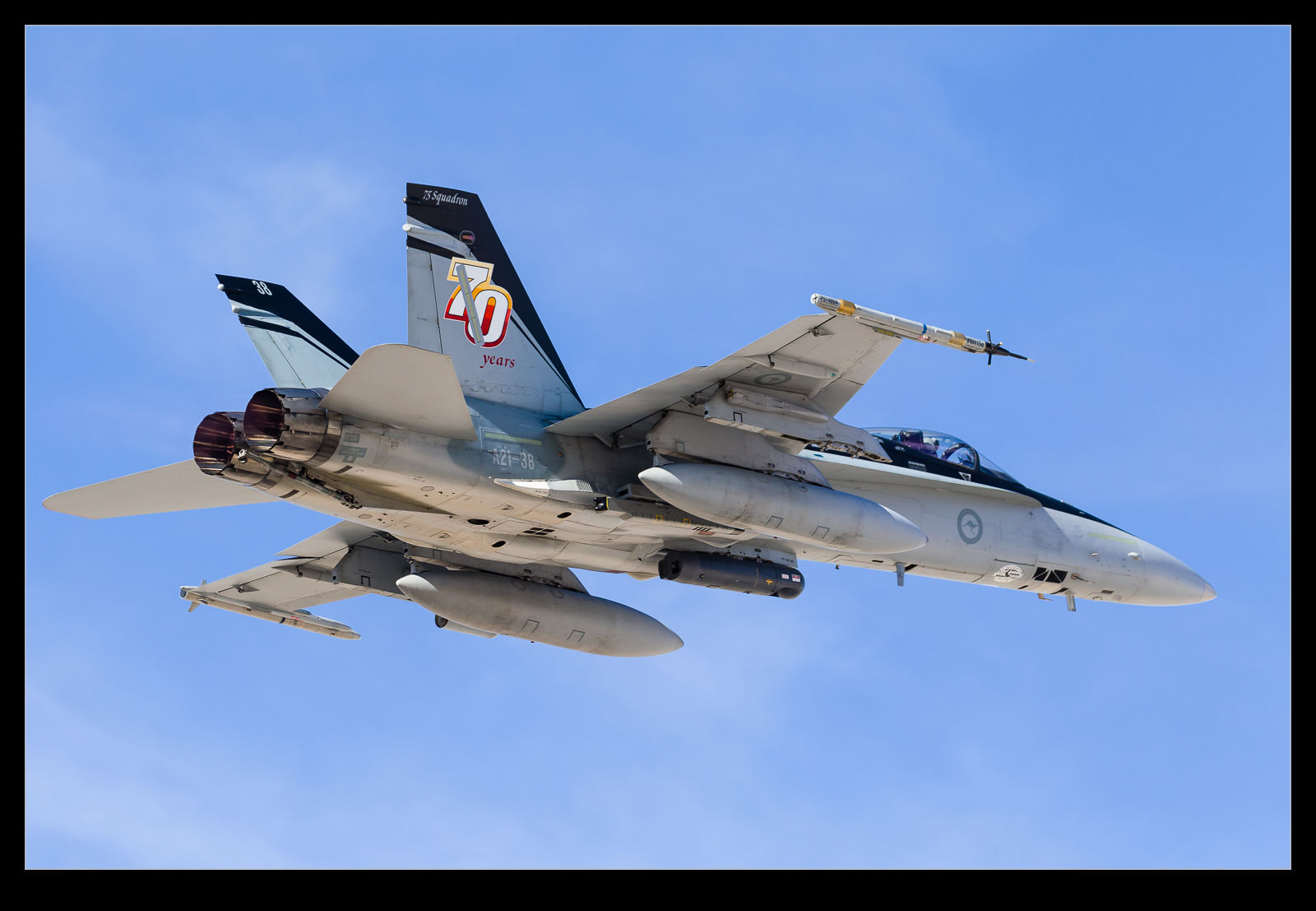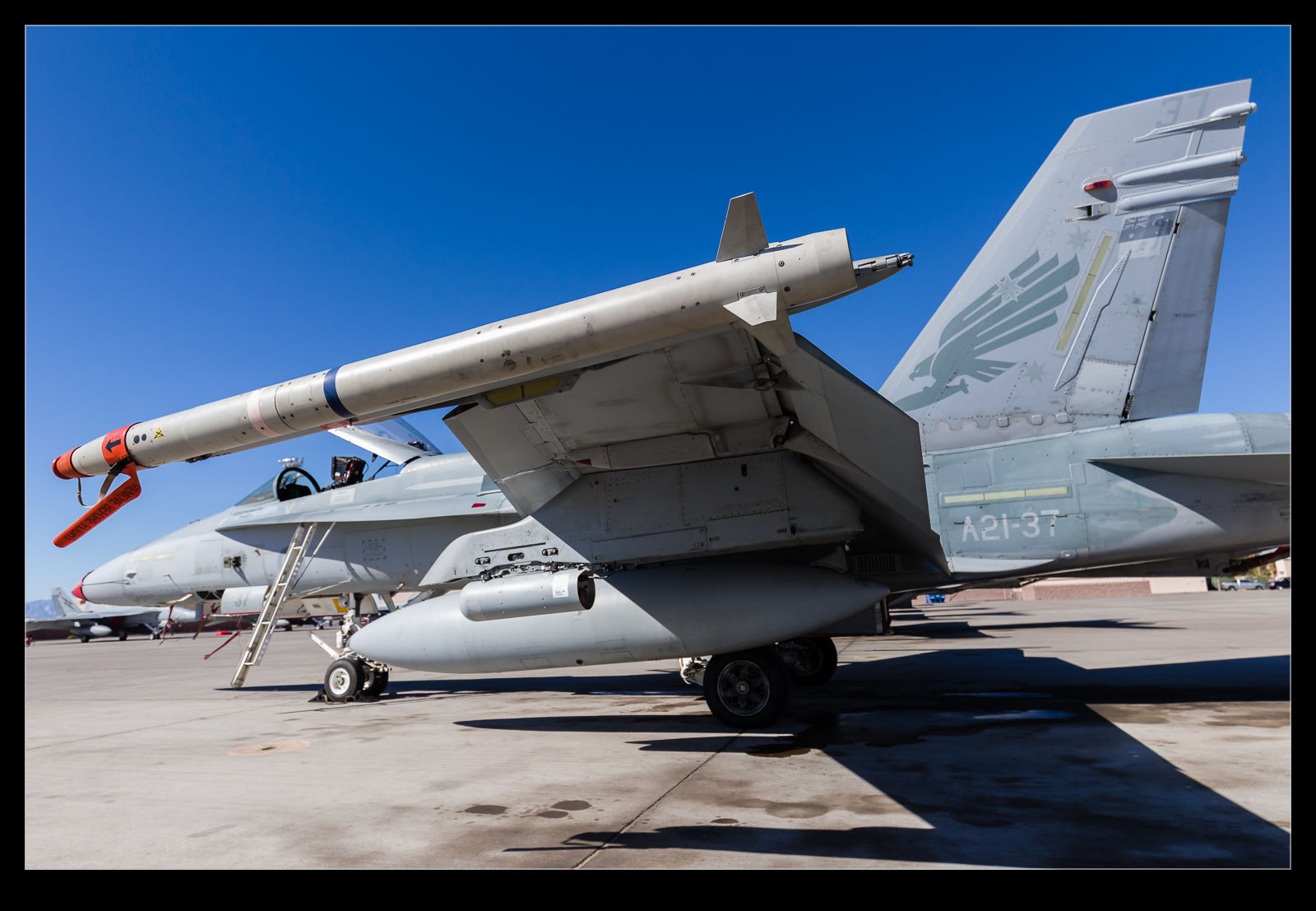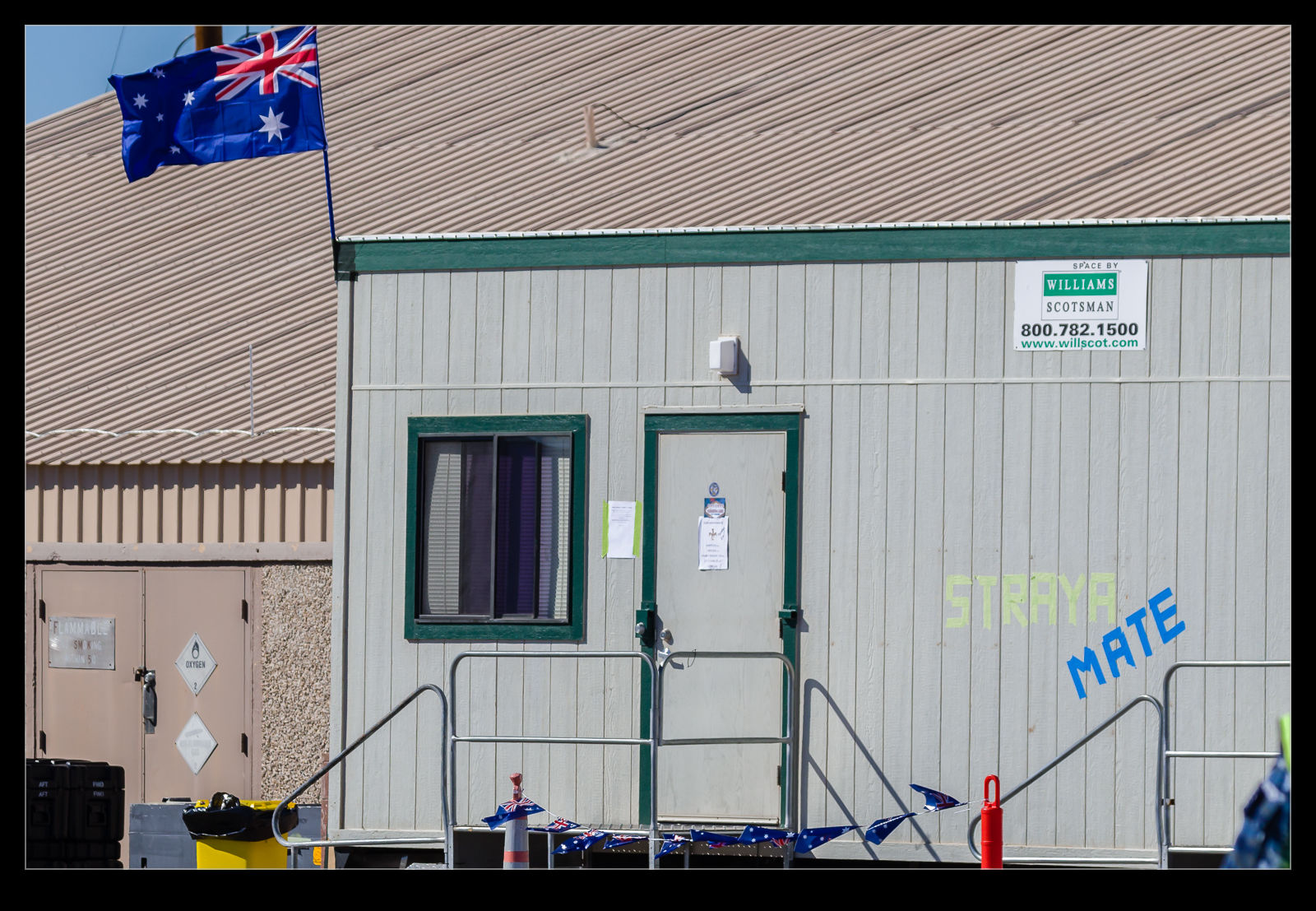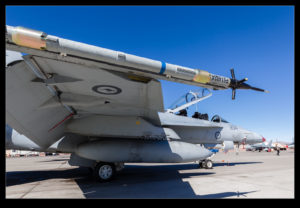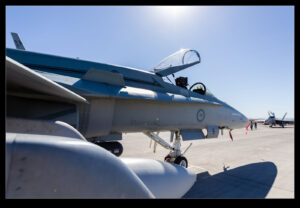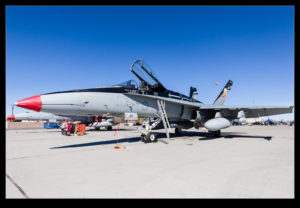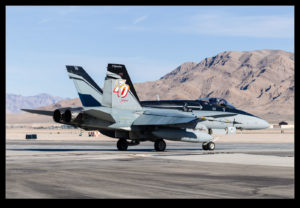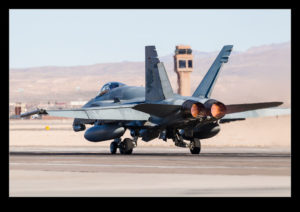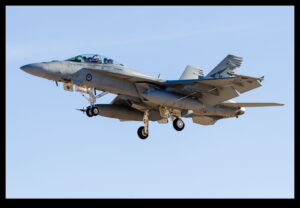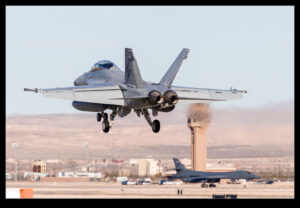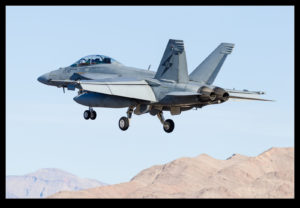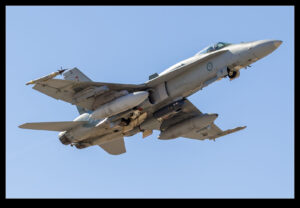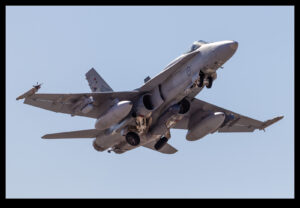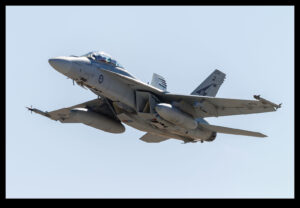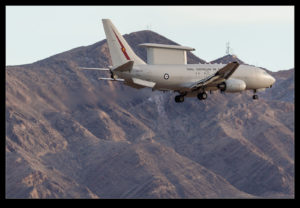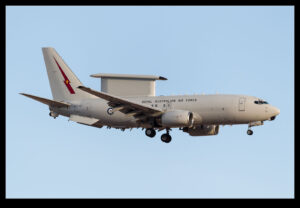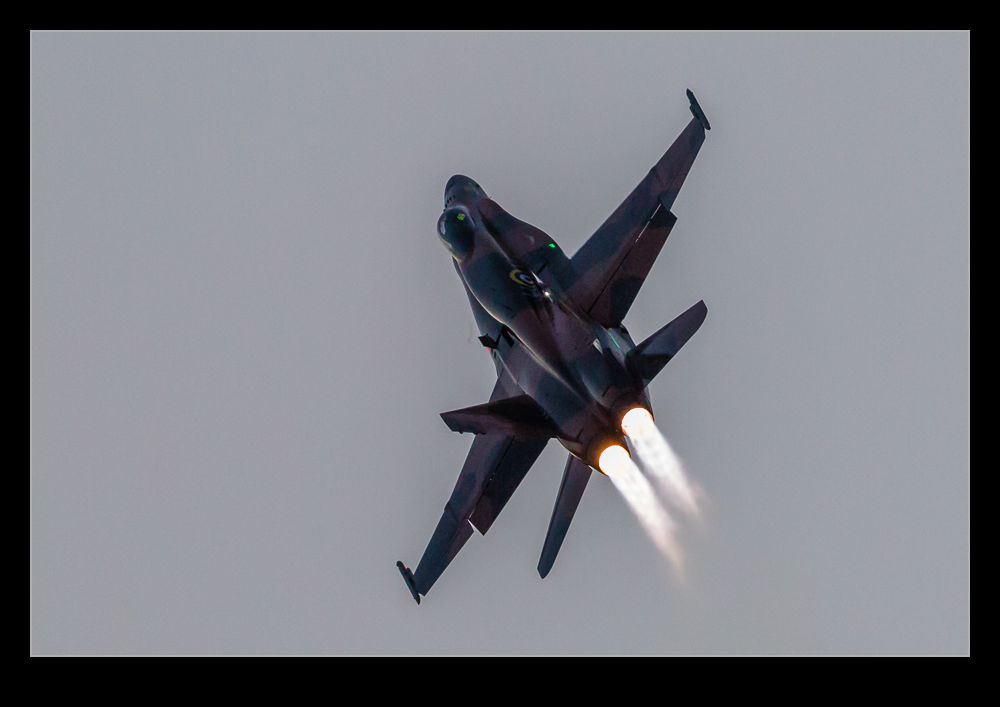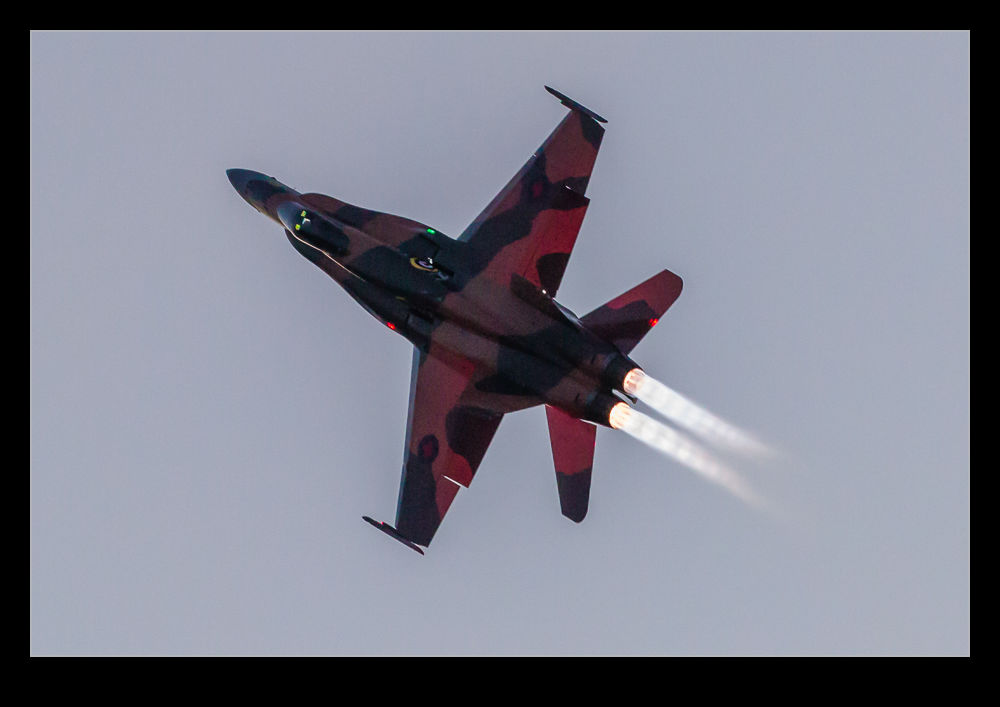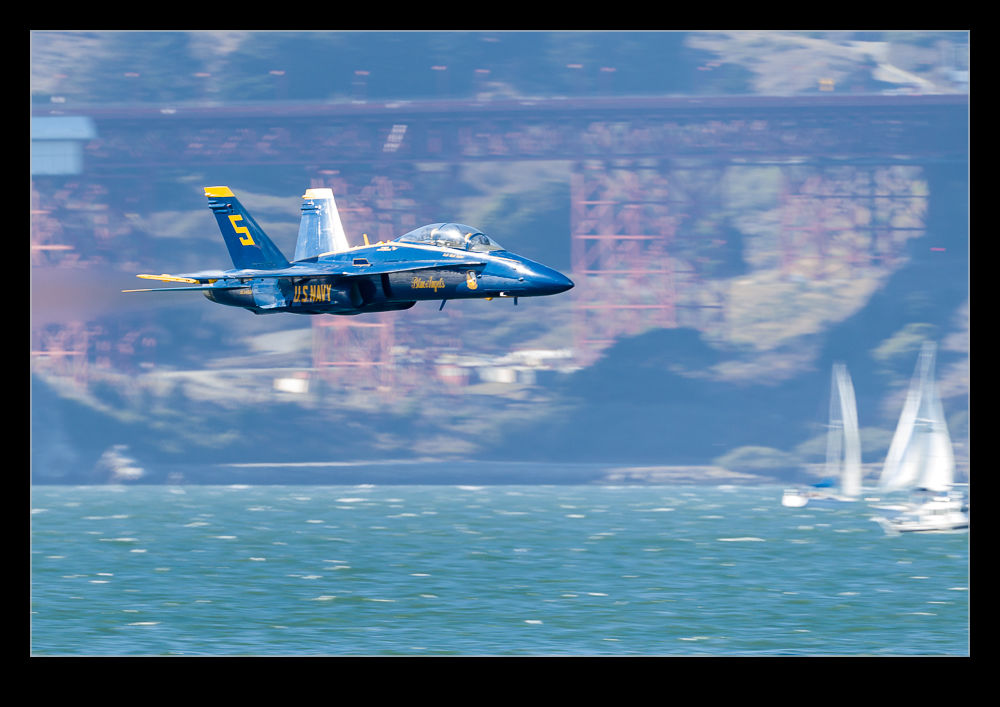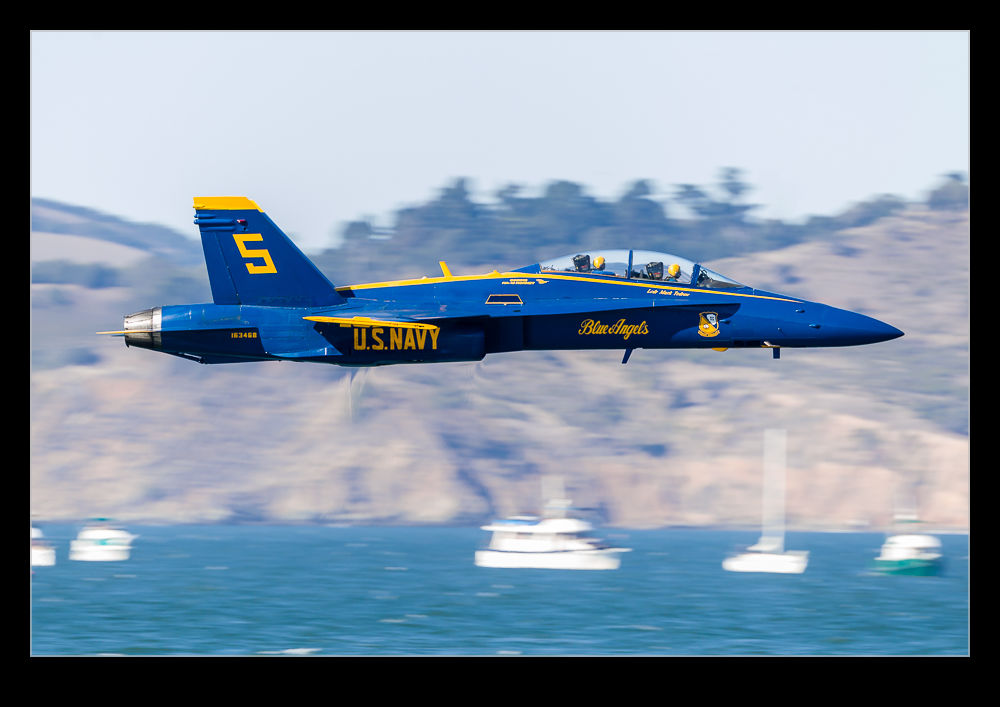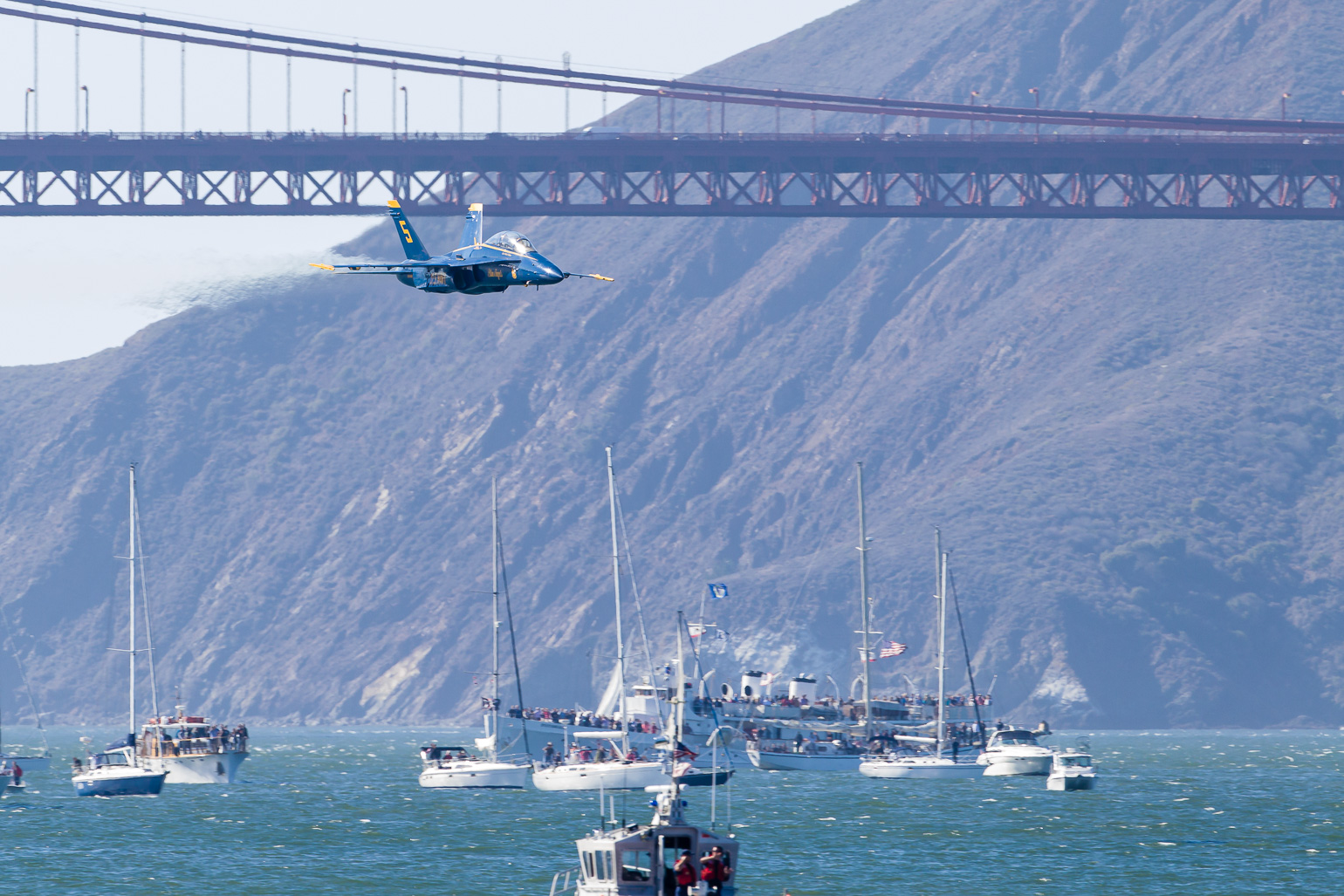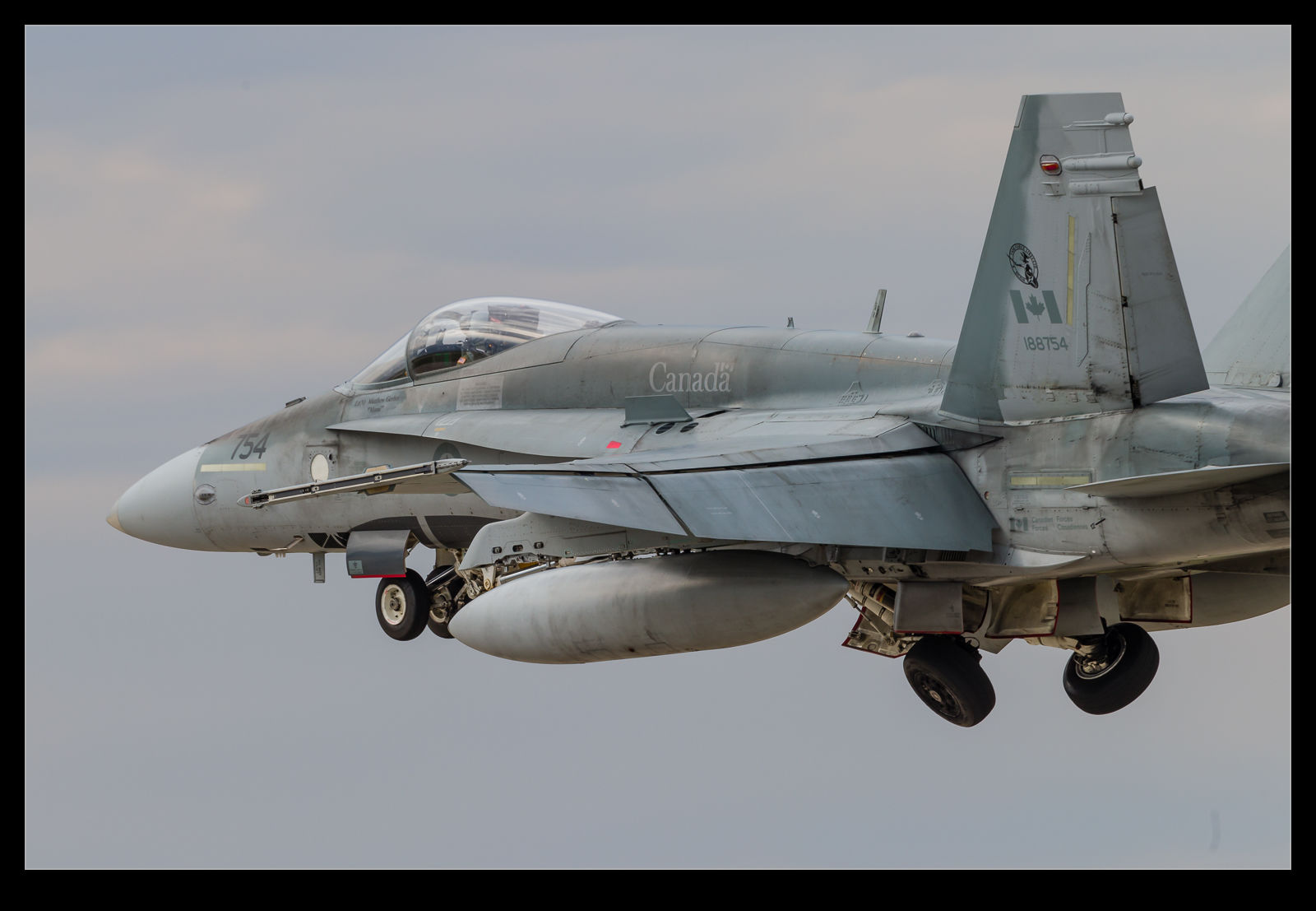 There was an airshow in the Midwest that everyone used to say was a great event. It was held at Janesville and I finally got around to going to it shortly before it ceased to be. I promise it wasn’t my fault that it ended. I was there for the arrivals as well as the show and a pair of Hornets came in from Canada. The nice thing about this arrival was that they seemed to have a little extra fuel. Consequently, there was time for a few approaches and overshoots.
There was an airshow in the Midwest that everyone used to say was a great event. It was held at Janesville and I finally got around to going to it shortly before it ceased to be. I promise it wasn’t my fault that it ended. I was there for the arrivals as well as the show and a pair of Hornets came in from Canada. The nice thing about this arrival was that they seemed to have a little extra fuel. Consequently, there was time for a few approaches and overshoots.
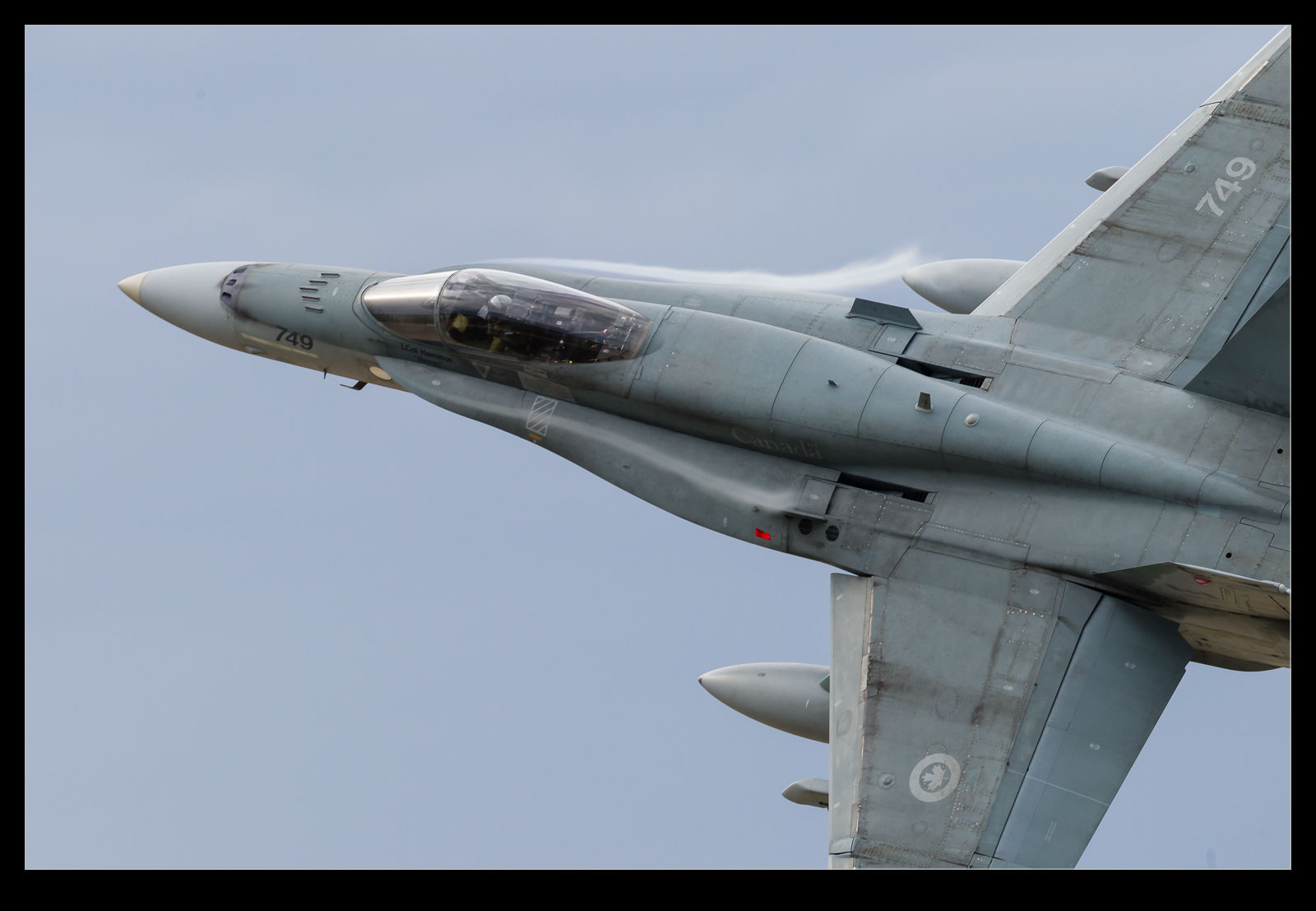 The light was a bit subdued that evening but it still had a slightly warm feel to it. Besides, pick your white balance and you can adjust just how warm things actually looked! I was shooting with the long lens from my location when they arrived so everything was taken at 500mm. Sometimes that was way too much lens for the distance between us but it was just an opportunity for a tight crop – let’s say that was an artistic decision!
The light was a bit subdued that evening but it still had a slightly warm feel to it. Besides, pick your white balance and you can adjust just how warm things actually looked! I was shooting with the long lens from my location when they arrived so everything was taken at 500mm. Sometimes that was way too much lens for the distance between us but it was just an opportunity for a tight crop – let’s say that was an artistic decision!
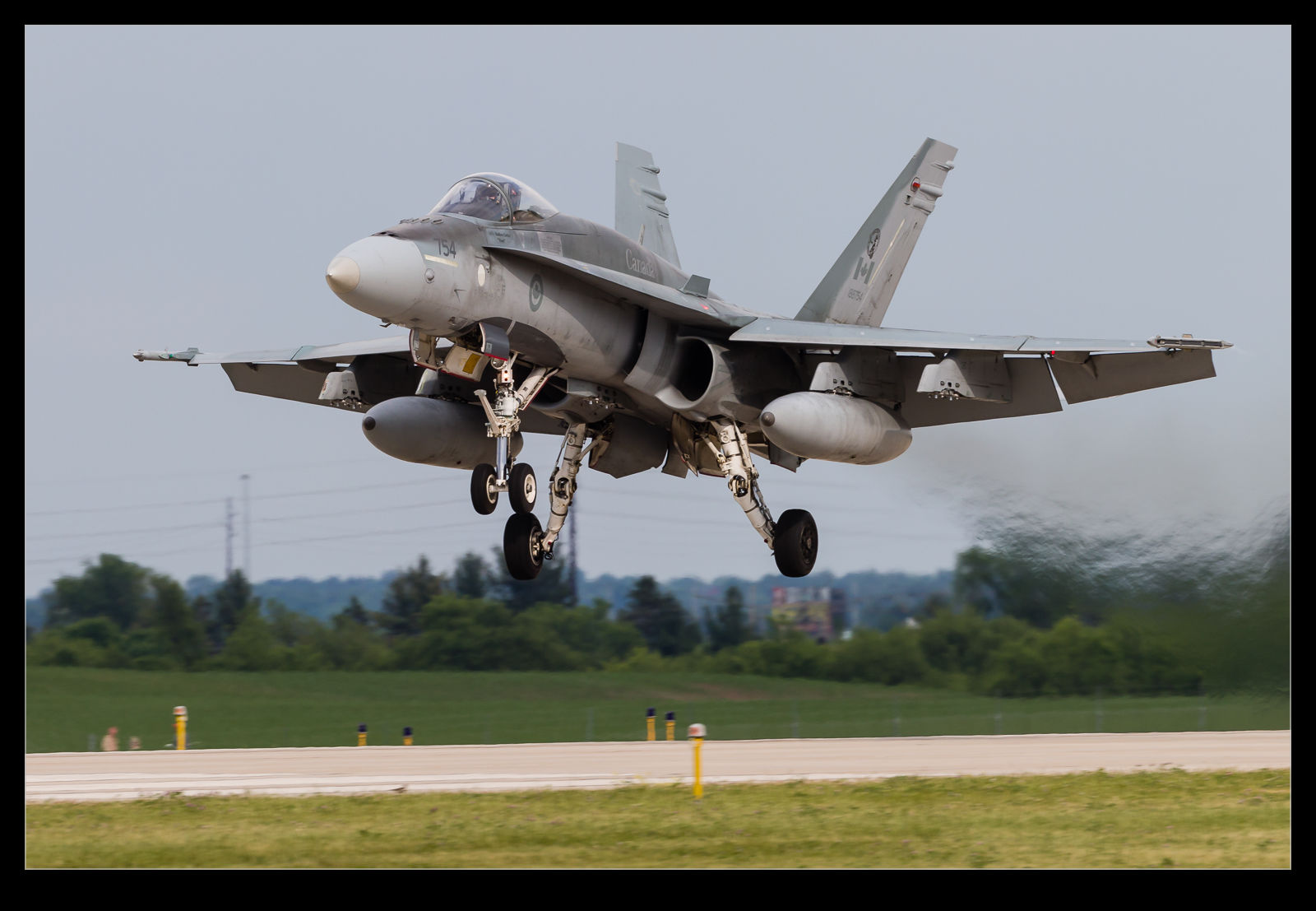 The Hornet gear tucks up in a complex way and I got a few shots of them cleaning up as they powered away in to the pattern. A few times they pulled downwind pretty quickly and it felt like you were looking over their shoulder into the cockpit. I can even crop in and see the displays on the panel (later in the day means the ambient light isn’t too much making the cockpit a deep shadow. This was one of the high points of the evening. Shame I never got to see other shows at this venue.
The Hornet gear tucks up in a complex way and I got a few shots of them cleaning up as they powered away in to the pattern. A few times they pulled downwind pretty quickly and it felt like you were looking over their shoulder into the cockpit. I can even crop in and see the displays on the panel (later in the day means the ambient light isn’t too much making the cockpit a deep shadow. This was one of the high points of the evening. Shame I never got to see other shows at this venue.
